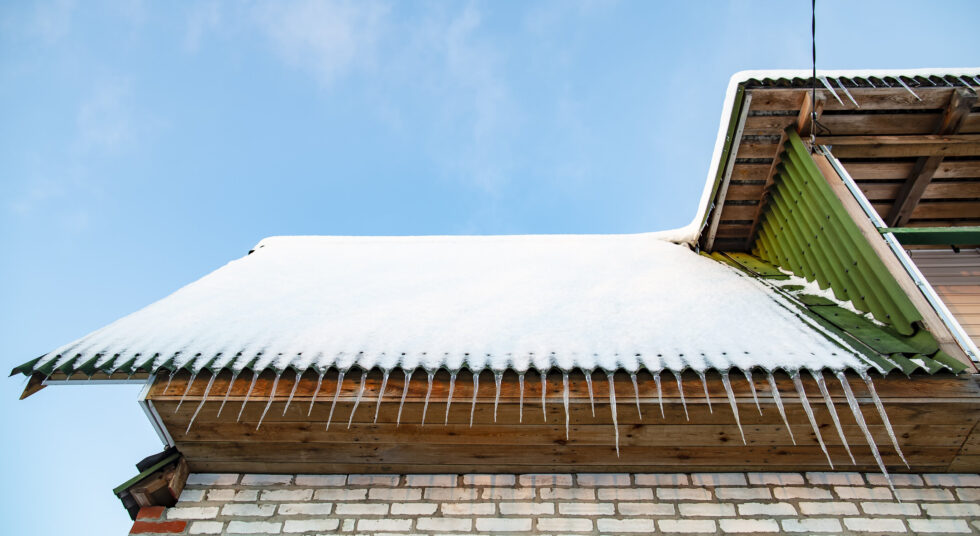
Winter is coming. That means one thing; cold weather and snow are also well on their way. Ice storms or freezing conditions can easily and quickly cause ice buildup on your roof, particularly if it isn’t very well insulated or has poor ventilation. After a cold spell, you may notice ice dams building along the edges of your roof. Typically, the presence of large icicles is a good indicator of an ice dam. Ice dams are thick layers of ice that build up along the eaves and gutters, causing blockages and drainage issues.
While they may look like a beautiful winter wonderland scene, ice dams can cause some serious damage to your roof, such as:
- Leakage
- Damaged Roof Shingles
- Water Stains
- Mold or Fungi Growth
- Serious Structural Damage
To avoid any serious and expensive damage, it’s important to know how to effectively de-ice your roof in winter.
Tips for De-icing Your Roof
Use a Snow Rake or Ice Pick
You can try using a snow rake to scrape off snow buildup in a downward motion, but be very careful when doing so. Avoid standing on ladders or your roof in icy or slippery conditions at all costs. Snow rakes can also potentially cause damage if used incorrectly. If you are uncertain or unsure about how to use one, don’t just wing it, it’s best to contact a professional roofer.
You could also use an icepick to carefully chip away at ice dams until they crack and fall away. Avoid hitting them too hard, you only want to make them break up enough to remove rather than picking so vigorously you damage the roofing below.
Use Warm Water
Beware, this is only a temporary DIY solution best deployed in a pinch or the absence of any other remedy. Simply use a spray bottle or a bucket to apply very warm water to the ice dams to allow them to melt and drain away. Avoid using warm water during or before another freezing spell, as the addition of more water that can freeze will only add to the problem. Ensure there is enough time for the warm water to fully melt and drain the ice and snow away before re-freezing if you are going to use this method.
Use De-icing Chemicals
There are several products available for purchase that de-ice your roof with chemicals. They work very well but can be a bit pricey, particularly if this is a solution you’re using multiple times throughout the season. Typically, liquid de-icers work the best, especially for very thick ice. It’s best to avoid any de-icing product that contains chemicals that can corrode your roofing material, such as sodium chloride or calcium chloride.
Heat Cables
Unfortunately, this method likely won’t help you mid-winter or solve an already present problem, as heat cables need to be installed before freezing temperatures. However, if installed before the winter weather sets in, heat cables are one of the most effective and least time-consuming solutions. These cables are installed in a zig-zag pattern along the roofline near the gutters to create channels for water to drain off and prevent ice build-up. They’ll certainly do their job and keep you from having to regularly apply DIY remedies.
Keeping a close eye on your roof during freezing temperatures should enable you to solve any serious issues as they arise. Make sure to regularly check your roof for leaks or signs of damage that may have been caused by ice build-up. Remember, as with most other roofing solutions, remaining diligent and fixing the small issues as they arise is a much more effective method than ignoring them and then having to pay for costly repairs.
If ice dams are causing a persistent issue for you and you’re tired of trekking up ladders with an icepick every winter, it’s best to call a professional roofer to help you solve your problem.

